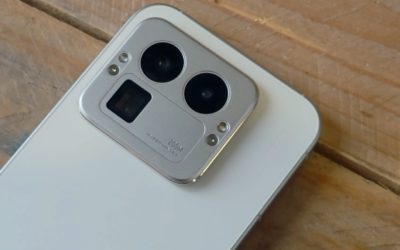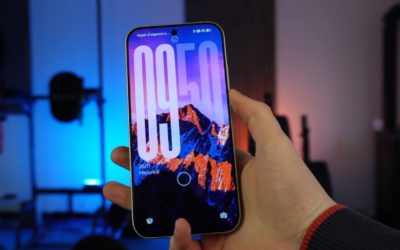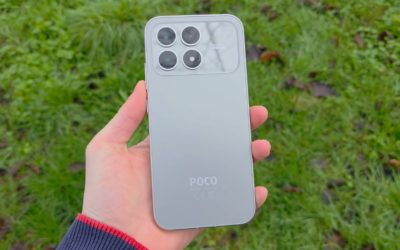Honestly, it had been a long time. I hadn’t seen a phone this attractive. This Google Pixel 9a truly surprised me. I absolutely love the recipe Google cooked up for this device. Hello everyone, it’s Hugo. As you’ve gathered, I’m going to share my experience with the Google Pixel 9a. Let’s get started!
Design and Handling: A Real Gem?
Let’s dive right into the heart of the matter. The Google Pixel 9a offers several interesting options.
Colors and Storage Options
Four colors are available for this model. I personally chose the “Iris Rose” color. I find it absolutely stunning. There’s also the “Porcelain” color. Finally, a “Volcanic Black” version is offered.
Regarding storage, Google provides two options. You have a version with 128GB of storage. Its price is €549. There’s also a 256GB version. This one costs €649. Be aware, this capacity isn’t available for all colors. Only the Iris and Black versions offer it.
I must admit, I find the price a bit steep. Especially when I compare it to the competition. Even the Galaxy A56 sometimes seems better positioned. But perhaps this slightly higher price hides some advantages. Let’s take a closer look.
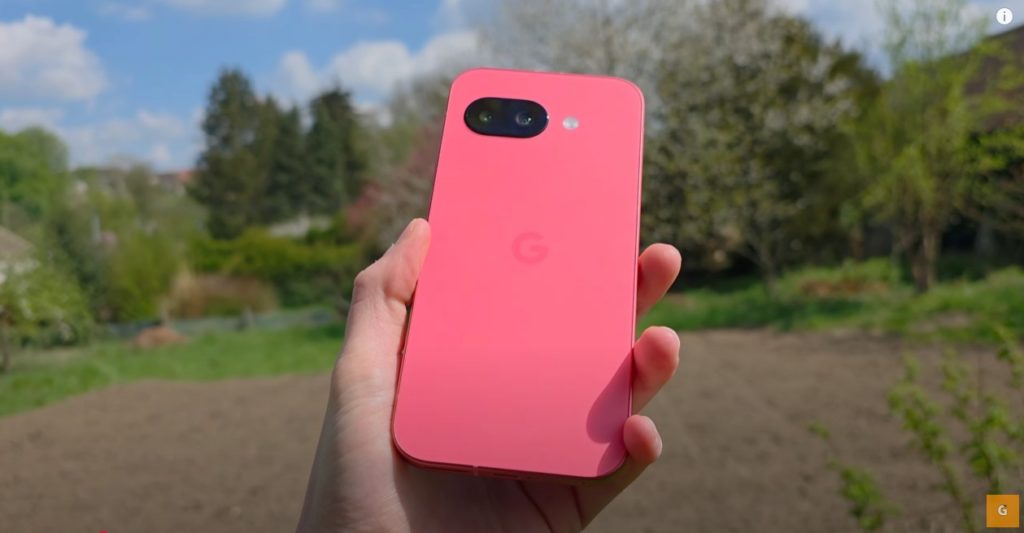
A Compact and Elegant Format
So, I ordered the rose version. I thought a bit of color would be nice. Both in my videos and in life. And honestly, this color is superb. Google opted for a very compact format. That’s something I really appreciate.
Its dimensions confirm this. It measures 154.7 mm in height. Its width is 73.3 mm. The thickness reaches 8.9 mm. It’s not the thinnest phone on the market. But it remains quite acceptable. Its weight is 185 grams. So, it feels rather light in the hand.
The design features flat edges. The corners are pleasantly rounded. We find the distinctive “Google touch”. I’m talking about the button layout. On the right edge, the power button is on top. The volume buttons are located below. This differs from many other Android phones.
On the back, I discovered a matte finish. That’s an excellent point for me. It absolutely doesn’t attract fingerprints. The phone’s edges are also matte. I much prefer this to the glossy edges of the Pixel 9. The look is much more understated and elegant.
Overall, I find the phone very well-finished. It fits perfectly in the hand. The real stroke of genius, in my opinion, is on the back. The camera sensors are integrated into the design. They don’t form a large, protruding bump. Not like on certain other models I won’t name. I really like this approach. If only other manufacturers could take inspiration from this. It’s so much more beautiful and harmonious. It’s simply prettier.
The Annoying Part: The Screen Bezels
Let’s move to the front. The screen is flat and measures 6.3 inches. It uses OLED technology. Its resolution is 1080 by 2400 pixels. The display is smooth, varying from 60 to 120 Hz. The maximum brightness reaches 1800 nits in HDR. It can even peak at 2700 nits. So far, the design seems almost perfect.
However, one detail bothers me a bit. It concerns the front face. Look at these screen bezels! They are simply huge. I’m talking about the black frame all around the display. I don’t have the exact measurement handy. But comparing it to the Galaxy A56 I have here, they seem almost twice as thick.
I must confess, it’s the first comment people made to me. Upon seeing the phone, everyone pointed out the bezels. Some even asked me: “Is this a new phone or a model from 2015?”. Yes, these bezels are prominent. It’s undeniable.
Is this really a deal-breaker? I’m not sure. If you’re looking for an all-screen front, this isn’t it. The screen could have been larger within the same chassis. We have to admit the bezels are definitely there.
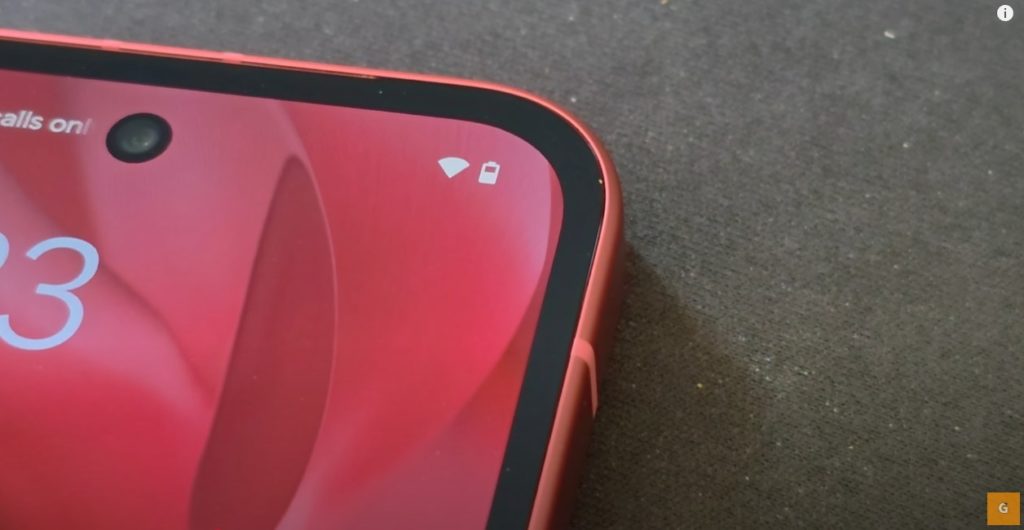
The Screen: Bright but Temperamental
So, how does this screen perform in daily use?
Display Quality
The base brightness is good. The screen is very fluid thanks to the 120 Hz. It’s beautiful, with well-calibrated colors.The usual “Google sauce”. It’s very pleasant to look at daily.
The Auto-Brightness Sensor
However, I have an issue with the brightness sensor. The one that manages automatic adjustment. I find it a bit temperamental. When I leave the brightness in automatic mode, the phone hesitates. It doesn’t push the brightness to the max when needed.
I’m exaggerating slightly, but sometimes I feel like I have to do this. Point my phone directly at the sun for it to react. For it to think: “Ah yes, now I need to blast the brightness”. I often find myself having to adjust it manually. I push the slider to the max because I can’t see anything. And then, yes, the screen becomes perfectly readable.
In summary, the screen itself is very high quality. Smooth, well-calibrated, pleasant. It’s just this automatic management that could be improved.
Battery Life and Charging: Could Be Better
Let’s now address a crucial topic: battery life. It’s extremely important on a smartphone. You can have the best phone in the world. If its battery life is poor, it’s not a good phone.
The Battery and its Longevity
What battery powers this Google Pixel 9a? It’s a 5100 mAh battery. That’s a respectable capacity on paper. Unfortunately, the charging is not fast at all. It caps at 23W. This is well below the current competition. At Samsung, the A56 goes up to 45W. With other brands like Realme, speeds often exceed 60W, even 80W.
This low charging power has a direct consequence. Fully charging the phone takes a very long time. You need over an hour and thirty minutes. That’s enormous in 2025 (the current date being April 28, 2025).
Once charged, how does it perform? Is the battery life good? Let’s say it’s okay. It’s better than the Pixel 8a’s. The latter wasn’t a champion either. So, there’s a slight improvement. However, the battery life remains well below that of mid-range competitors. The Galaxy A56 leaves it in the dust. The Realme 14 Pro Plus does even better.
If you’re not a very heavy user, it should be fine. You should normally last the full day. I stress “normally”. However, if you push all its features, things change. If you take lots of photos and videos. If you play games regularly. Then, lasting the entire day will become difficult.
Slow Charging
I’ll reiterate the 23W charging. In 2025, that’s really very little. It makes the experience less convenient. Especially if you need a quick boost during the day. It’s a real weak point for me.
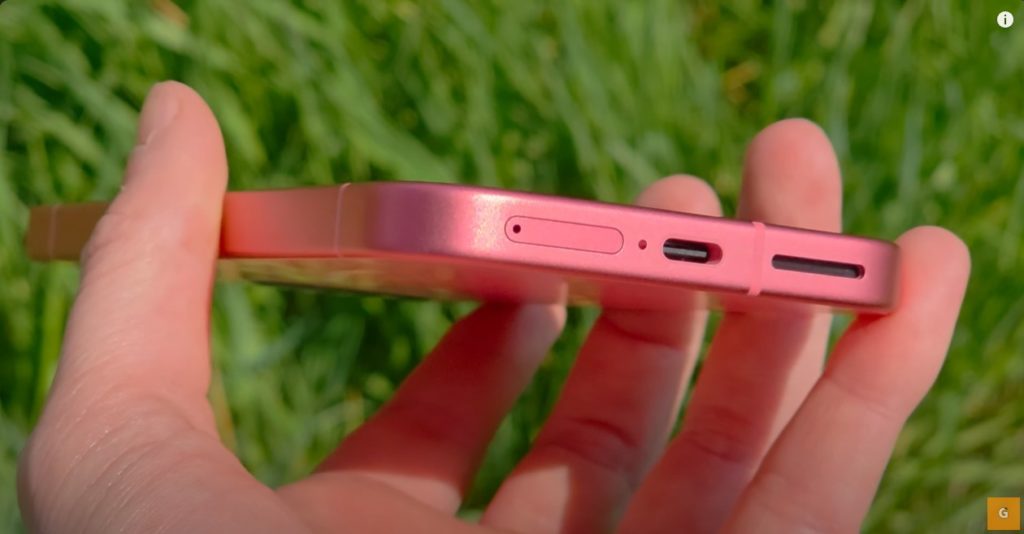
Performance and Software: The Google Magic Works
Let’s talk power. This Google Pixel 9a features the Tensor G4 chip. The same as in the Pixel 9? Well, no. I made a small mistake in my initial impression. This is a limited version of the chip. It is therefore less powerful.
The Tensor G4 Chip (Limited Version)
Despite this limitation, an important point remains. This chip provides access to the latest Google technologies. Especially for artificial intelligence features. Those that already exist and those yet to come. That’s rather good news. Supporting the processor are 8GB of RAM.
In practice, what does this mean? Is the phone powerful? Is it smooth? For daily use, the answer is yes. Everything is fluid, responsive. Navigation, common apps, everything works very well. For the daily grind, this phone is good.
Where it gets a bit tricky is raw performance. It’s less powerful than some competitors. Yes, we keep coming back to this. This phone is clearly not designed for intensive gaming. You can launch games, of course. But as soon as you push the graphics to the maximum, it shows its limits. It’s a bit of a shame. Yet, its scores on benchmarks (like Geekbench) are decent. It falls within the mid-range average.
The Software Experience and Gemini AI
Let’s move on to the software. You know my fondness for the Pixel interface. I generally find it excellent. The Google Pixel 9a comes directly with the latest version of Android. It integrates recent Gemini technologies. I’m thinking of Gemini 2.0 Flash or even 2.5 Pro (if you pay for the subscription, like me).
A major advantage: the updates. Like the Galaxy A56 (if I’m not mistaken), it benefits from 7 years of updates. That’s excellent for a phone at this price. If you plan to keep it for a long time, it’s a real plus.
Above all, it packs numerous AI features. Almost as many as Google’s high-end models. This is where it stands out from the mid-range competition. Often, competitors only include basic AI functions. Look at the Galaxy A56. It doesn’t have all the features of the S25 Ultra.
With the Google Pixel 9a, you get advanced tools. Gemini can query the content of your screen. It can analyze what the camera sees. I’m not sure if some of these functions are linked to my paid subscription. But I know that on the Pixel 9, they arrived for free. So it’s highly likely they are free here too.
Of course, you get the basic “Circle to Search” feature. It’s now present on many Android phones. But the Google Pixel 9a goes further. Especially in photography. It offers functions like “Best Shot”. Take several group photos. Then choose the best expression for each person. There’s also “Magic Eraser”. It removes unwanted objects or people. And “Audio Magic Eraser” reduces background noise in videos.
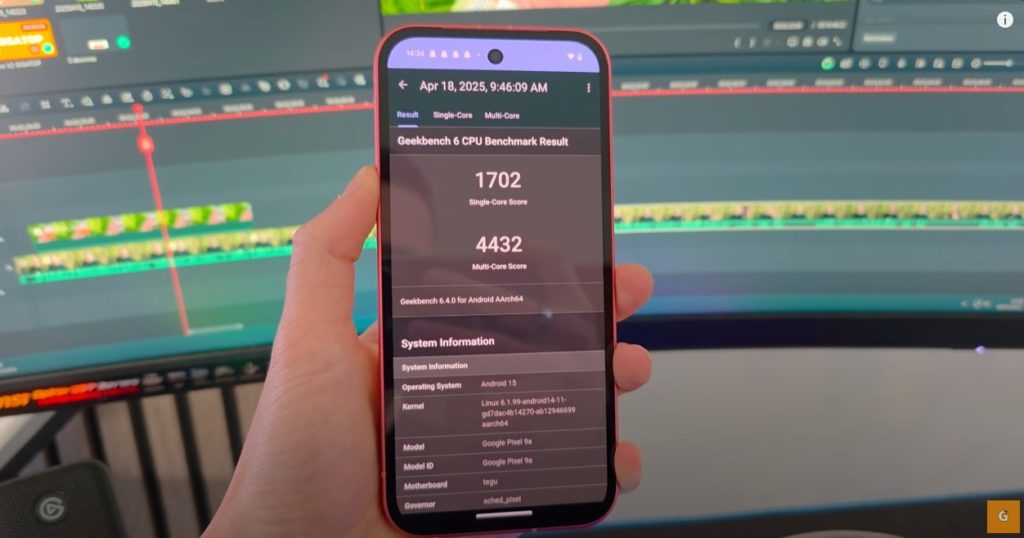
Photography: Google’s Strong Suit?
Google is renowned for its photography skills. What about this Google Pixel 9a?
Hardware Configuration
The rear setup is simple. We have two sensors. The main one is a 48-megapixel sensor. The other is a 13-megapixel ultra-wide sensor. For selfies, the front camera is also 13 megapixels. Google promises digital zoom up to 8x. Which, on paper, doesn’t seem extraordinary.
Photo Quality: Main Sensor and Ultra-Wide
The main sensor is really good. Especially in good light. For its price range, it delivers superb photos. You can see the Google signature in the image processing. Sometimes, when taking the photo, you might doubt the result. “Yeah, this one isn’t great”. But once in the gallery, it looks stunning. Google’s software processing works wonders. Even at this price point.
I noticed a small weakness in portrait mode. It sometimes struggles with fine details. For example, my cat’s fur. The bokeh effect (background blur) is sometimes approximate. Subject edge detection isn’t always perfect.
The ultra-wide sensor is decent. Its colorimetry is quite close to that of the main sensor. That’s good for consistency. Obviously, you lose a bit of sharpness compared to the main sensor.
The Zoom: The Elephant in the Room
Let’s talk about the zoom. Well, if there really is one on this phone. Because in reality, there’s no dedicated telephoto lens. You can digitally zoom up to 2x without too much loss. Beyond that, the quality degrades rapidly. The further the zoom goes, the worse the image becomes. Honestly, there’s not much to say. There’s no real zoom capability here.
Despite this, across all sensors (main and ultra-wide), the photos are good. They are largely sufficient for social media. An average person likely won’t see the difference. They won’t know if the photo was taken with an ultra-high-end phone or this Google Pixel 9a. This holds true for most shots. A quick aside for those wondering about Snapchat. Yes, it takes nice photos for sending snaps.
Video Quality
I also tested the video capabilities. I filmed a few clips to form an opinion. The phone can shoot in 4K at 60 frames per second. The quality seems good. I filmed a stream, sand, trees. Even against the light, it handles it reasonably well. I tested the 2x zoom in video. It’s decent, nothing more. The autofocus on a plant adjusted progressively and fairly well.
I also used the selfie camera in 4K. With the sun behind me to make it challenging. The result seems quite good. There’s an option to switch between 1x and 1.4x framing. This gives a slight zoom or a slight wide-angle effect. It’s nice. Overall, the video is usable and of good quality for this price range.
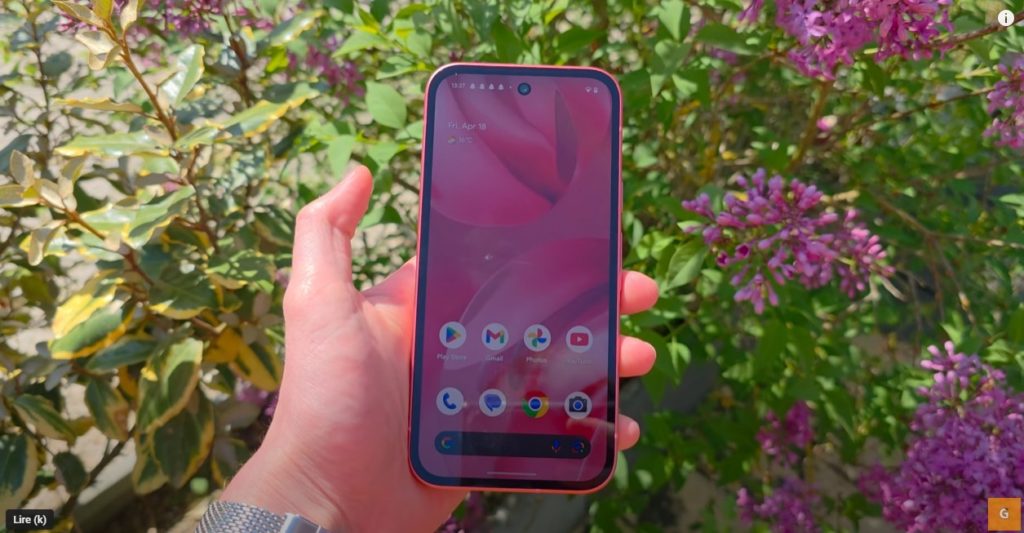
My Final Verdict on the Google Pixel 9a
So, what’s the takeaway from this magnificent Google Pixel 9a?
First off, I can tell you this. For me, it’s better than last year’s model. There’s no question about it.
Let’s summarize the positives and areas for improvement.
The Positives
- The 7 years of software updates. This is incredible and ensures longevity.
- The advanced AI features. You get almost everything Google’s flagships offer. It’s better than the mid-range competition on this front.
- The design. I repeat, this phone is just beautiful. Compact, smooth, with the integrated camera module. Google, do this on all your phones! It’s so much better.
- The main camera sensor. It produces incredible shots for its category. As long as you don’t zoom.
Areas for Improvement
- The zoom. It’s practically non-existent. It should have at least a good quality 2x or 3x digital zoom. Perhaps to get decent photos at 5x, like the Realme 14 Pro Plus does. Yes, I mention it often, but I find it a benchmark in the mid-range.
- The screen bezels. They are too thick for a phone in 2025. It might appeal to some, but personally, I find them imposing.
- The battery life. It’s just okay, but inferior to direct competitors.
- The charging speed. 23W in 2025 is really too slow. Very, very little.
Who is This Phone For?
This Google Pixel 9a is aimed at those seeking an excellent photo experience (without zoom). For those who want pure, intelligent software that’s updated for a long time. For those who appreciate a compact and neat design. However, you’ll have to accept compromises on battery life, fast charging, and screen bezels.
There you have it, we’ve reached the end of this analysis. I hope it was helpful to you. Feel free to tell me in the comments what you think of this Google Pixel 9a. Are you planning to buy it?

